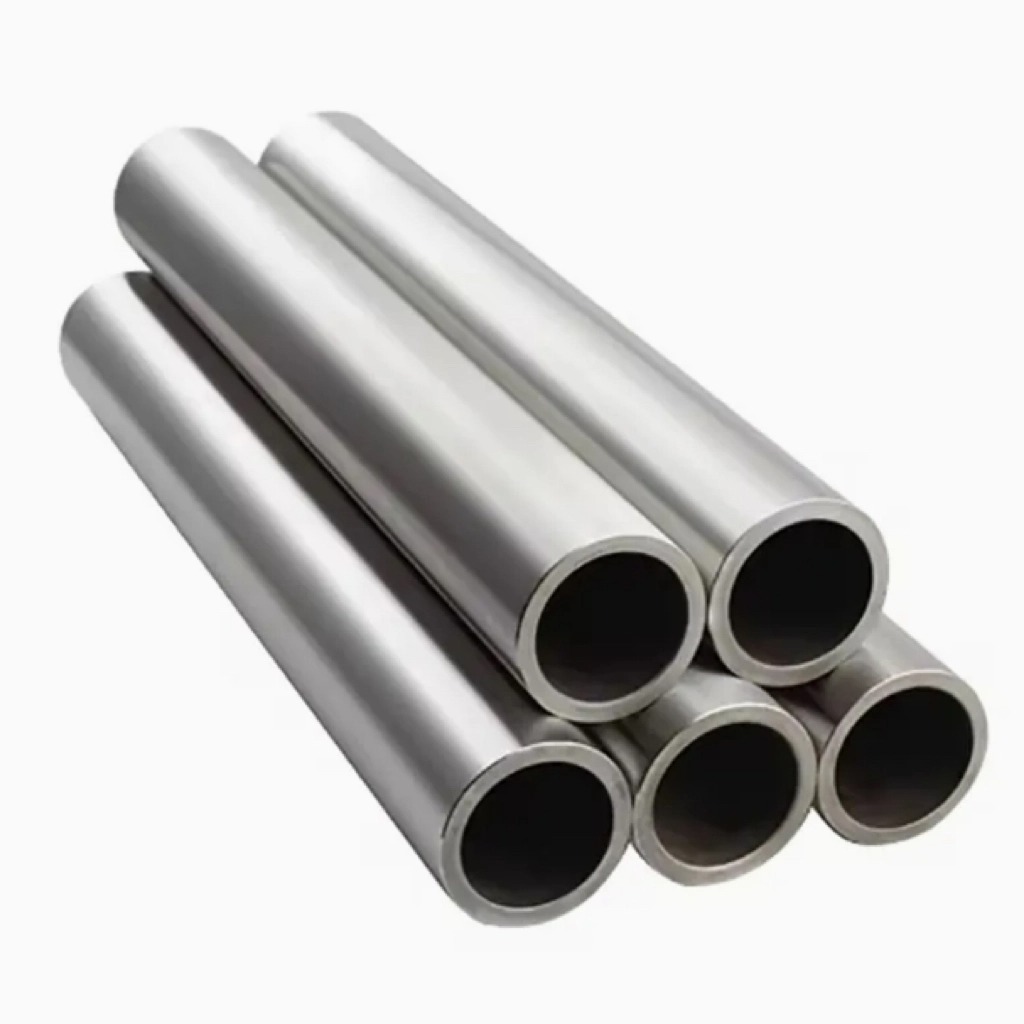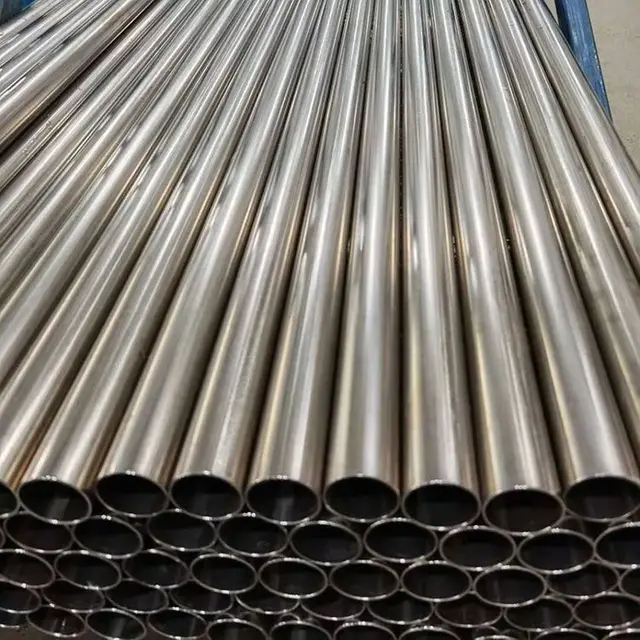T: +86-512-58335585
E: sale@chewit.cn
E: sale@chewit.cn
Shuangshan Road, Jingang Town, Zhangjiagang City, Jiangsu Province, China
Views: 211 Author: Site Editor Publish Time: 2025-07-21 Origin: Site
Titanium pipes have become a material of choice across many industries due to their exceptional strength-to-weight ratio, corrosion resistance, and excellent mechanical properties. However, when it comes to fabrication and installation, one common question arises: Can titanium pipes be bent without cracking? Understanding the bending capabilities of titanium pipes is critical for engineers, fabricators, and end-users to ensure optimal performance and structural integrity in applications ranging from aerospace to chemical processing.
In this article, we will explore the bending properties of titanium pipes, factors influencing their bendability, recommended practices for bending without damage, and common concerns that arise during the bending process.
Before delving into the bending capabilities of titanium pipes, it is essential to understand the unique material properties that titanium exhibits.
Titanium is a transition metal known for its high strength, low density, and excellent corrosion resistance. Its density is approximately 4.5 g/cm³, nearly half that of steel, making titanium pipes lightweight yet robust. One of titanium’s most notable characteristics is its high strength-to-weight ratio, which surpasses many other metals.
In addition, titanium alloys commonly used in pipe manufacturing offer impressive ductility and toughness, essential for bending operations. The ductility of titanium allows it to deform plastically without fracturing when subjected to stress, which is a key factor in bending.
However, pure titanium and titanium alloys behave differently under mechanical stress. Commercially pure titanium tends to be softer and more ductile but less strong, while alloys such as Ti-6Al-4V provide increased strength but may exhibit different bending characteristics.
The metallurgical structure of titanium, along with its surface condition and heat treatment status, will influence whether a pipe can be bent without cracking.

The straightforward answer is: Yes, titanium pipes can be bent without cracking, but this requires proper control of the bending process and an understanding of the influencing factors.
Titanium’s excellent ductility and toughness make it highly bendable relative to many other metals, but it is not immune to cracking if bent improperly. Cracking typically occurs due to excessive bending radius, improper tooling, rapid deformation, or the presence of surface imperfections.
Bending Radius: The radius of the bend relative to the pipe diameter plays a crucial role. A too-tight bend radius increases stress concentration and risks cracking.
Wall Thickness: Thicker-walled pipes require more force to bend and may be prone to buckling or cracking if not supported correctly.
Pipe Grade and Alloy: Different titanium grades have varying ductility and strength. For example, Ti-6Al-4V has different bending behavior compared to commercially pure titanium.
Bending Method: Cold bending, hot bending, and rotary draw bending impact how the pipe behaves. Hot bending reduces cracking risk by increasing ductility.
Surface Condition: Scratches, pits, or weld defects can act as stress concentrators and lead to cracking during bending.
To bend titanium pipes without cracking, manufacturers and fabricators employ a combination of correct techniques and precautionary measures:
Using an adequately large bend radius relative to the pipe diameter is fundamental. Industry guidelines often recommend a minimum bend radius of 3-5 times the pipe's outer diameter to prevent excessive stress.
Cold Bending: Suitable for thinner pipes and smaller bends; however, it requires precise control to avoid surface damage.
Hot Bending: Heating the pipe to a controlled temperature (below the beta transus temperature) increases ductility and reduces the risk of cracking.
Rotary Draw Bending: Offers precision and control over bend radius and angle, minimizing deformation and cracking.
Proper tooling that supports the pipe evenly and prevents local flattening or ovalization is critical. Mandrels or internal supports may be used to preserve pipe shape during bending.
Slow and steady bending prevents rapid deformation, which could cause stress concentrations leading to cracking.
Before bending, pipes should be inspected for surface defects and imperfections, and any issues should be repaired or pipes rejected if necessary.
| Pipe Outer Diameter (OD) | Minimum Bend Radius (Cold Bending) | Minimum Bend Radius (Hot Bending) |
|---|---|---|
| 10 mm | 30 mm (3×OD) | 20 mm (2×OD) |
| 25 mm | 75 mm (3×OD) | 50 mm (2×OD) |
| 50 mm | 150 mm (3×OD) | 100 mm (2×OD) |
| 100 mm | 300 mm (3×OD) | 200 mm (2×OD) |
Note: Bend radius recommendations vary depending on alloy grade, wall thickness, and specific application.
Despite titanium’s favorable bending properties, several concerns often arise in practice:
Repeated or aggressive bending can lead to work hardening in titanium, making it less ductile and more prone to cracking if bent further without annealing.
At high temperatures, titanium can oxidize rapidly if not protected by inert atmospheres or coatings, leading to surface embrittlement and cracks during bending.
Improper bending methods or insufficient support can cause the pipe cross-section to deform, resulting in thinning of the wall and weakened mechanical integrity.
Bending titanium pipes often requires specialized equipment and skilled operators, which can increase fabrication costs compared to more common metals.

A: Both methods are used depending on the pipe size, wall thickness, and bend radius required. Cold bending is practical for thinner pipes with larger radii, whereas hot bending is preferred for tighter bends or thicker pipes to avoid cracking by increasing ductility.
A: Repeated bending can cause work hardening, which reduces ductility and increases crack risk. If multiple bends are necessary, annealing processes between bends are recommended to restore ductility.
A: Commercially pure titanium is more ductile and easier to bend without cracking, but has lower strength. Alloys like Ti-6Al-4V are stronger but require more careful bending techniques due to reduced ductility.
A: Typically, a minimum bend radius of 3 times the pipe diameter for cold bending and 2 times for hot bending is recommended. However, this can vary based on pipe specifications and application.
A: Use proper bend radius, controlled bending speed, adequate support tooling, and select the appropriate bending temperature (cold or hot). Inspect pipes before bending to ensure surface integrity.
Titanium pipes offer an excellent balance of strength, corrosion resistance, and weight, making them indispensable in many high-performance applications. When it comes to bending, titanium pipes can indeed be bent without cracking, provided the process is carefully controlled and appropriate parameters are observed.
Key takeaways for successful bending include maintaining suitable bend radii, employing proper tooling, controlling deformation rates, and selecting the correct bending temperature based on pipe grade and thickness.
By understanding the underlying metallurgical properties of titanium and following established best practices, fabricators can minimize the risk of cracks and ensure the structural integrity of titanium pipe installations. Whether in aerospace, chemical plants, or medical devices, this knowledge helps unlock the full potential of titanium piping systems.